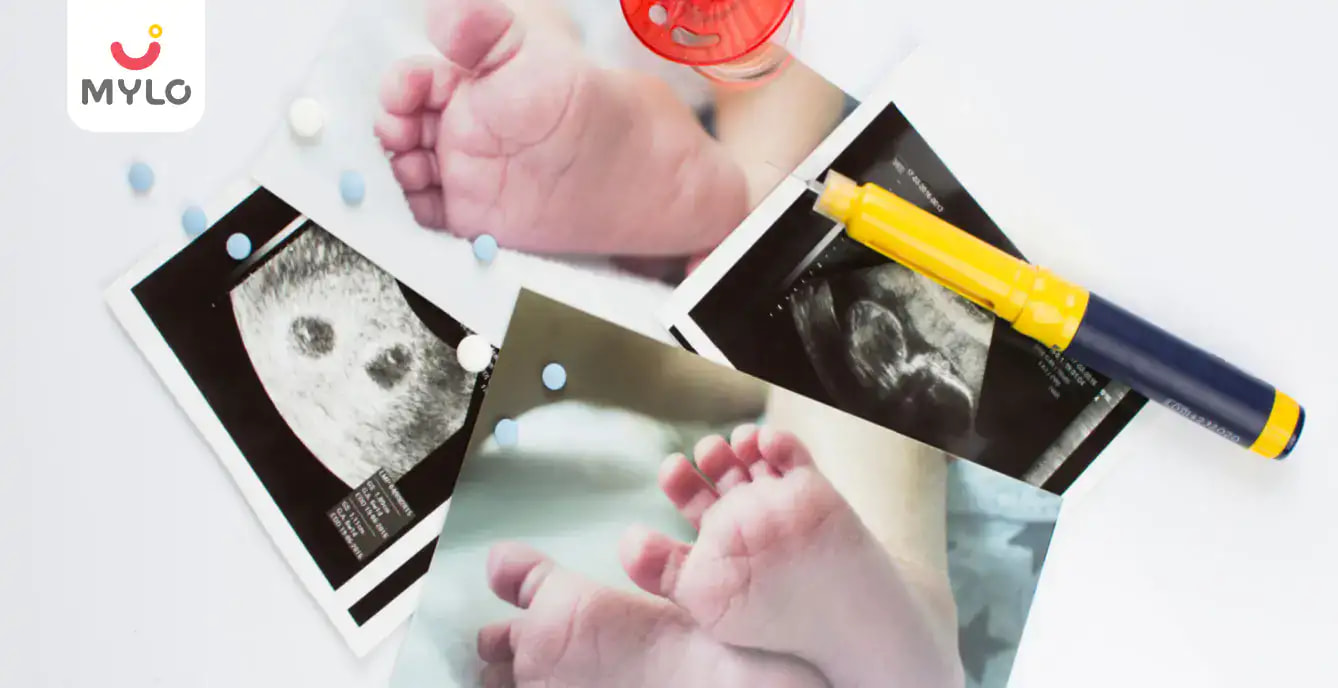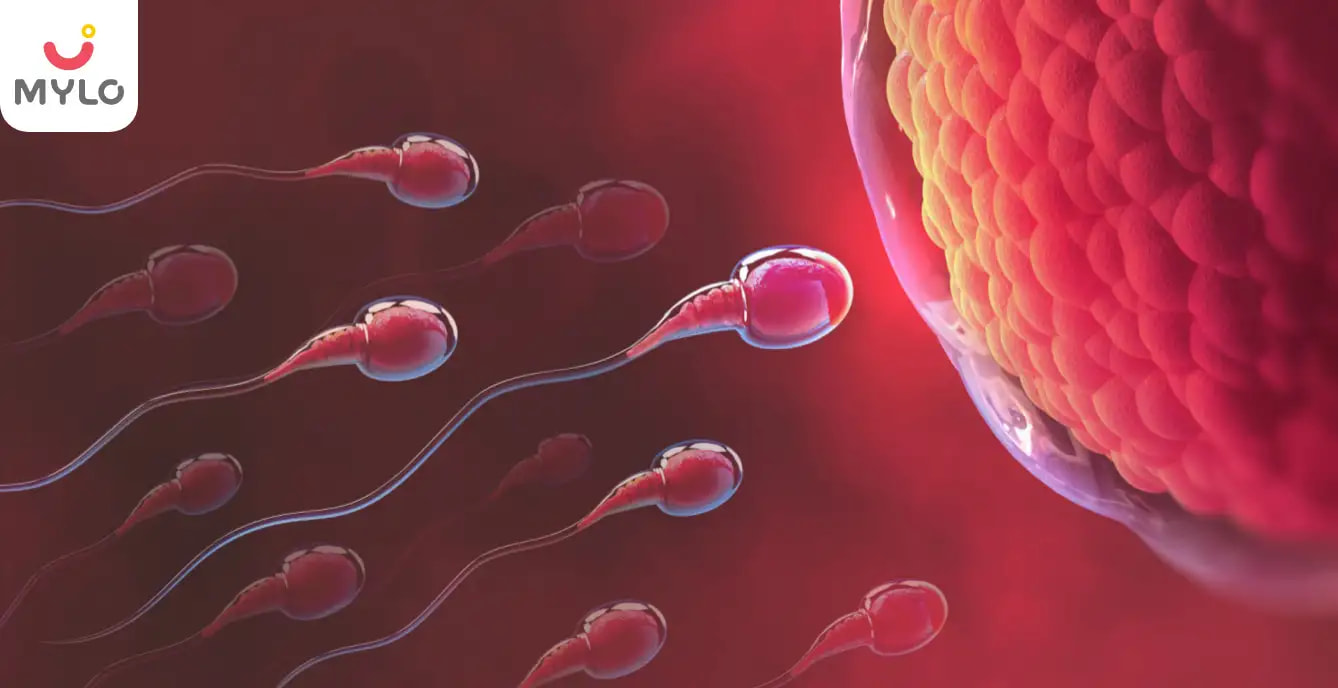- Home

- Conception

- How To Get Sperms For IUI (Intrauterine Insemination) Procedure?
In this Article

Conception
How To Get Sperms For IUI (Intrauterine Insemination) Procedure?
Updated on 3 November 2023
Introduction
When a couple discusses receiving infertility treatment, a doctor might recommend a procedure called artificial insemination. Several families who haven't been successful in getting pregnant may benefit from this simple process, which has few adverse effects.
A woman's cervix, fallopian tubes, or uterus are directly injected with sperm during artificial insemination. The procedure when a doctor inserts the sperm into the uterus is known as intrauterine insemination (IUI) and is the most popular treatment for infertility. What makes this useful? In IUI, the sperm's journey is shortened, and any obstacles are avoided. This approach can be the first one that the doctor suggests for treating infertility. When the ovary produces one or more eggs for fertilisation, concentrated and cleaned sperm are immediately injected into the uterus. The intended result of intrauterine insemination is for the sperm to travel into the fallopian tube, fertilise an egg that is already mature, and reach pregnancy.
Depending on the underlying causes of infertility, IUI can be timed to coincide with the regular cycle or the action of fertility drugs.
IUI is a straightforward, low-tech process that has the potential to be more economical than other forms of fertility therapy. It boosts the chances of a woman getting pregnant, but since every person's body is unique, there is no guarantee that IUI will be successful.
How to get ready?
One may take ovulation-stimulating fertility medications before the insemination operation. Semen is taken from a donor or a spouse. ‘Sperm washing’ is the procedure used to extract concentrated amounts of viable sperm from the semen. The doctor will then immediately insert the sperm into the uterus. If the egg is fertilised by sperm and then implants in the lining of the womb, it results in pregnancy.
Before the actual surgery, careful planning is required for intrauterine insemination:
1. Getting the semen sample ready
The spouse brings a sperm sample to the doctor's office, or sperm from a frozen donor can be prepared by thawing a vial. The sample will be cleaned in a way that isolates the extremely active, healthy sperm from lower-grade sperm and other materials to prevent non-sperm reactions in the woman's body from interfering with fertilisation. Using a small, highly concentrated quantity of healthy sperm improves the chance of conceiving.
2. Observing the ovulation cycle
Monitoring for indications of approaching ovulation is essential because the scheduling of IUI is critical. An at-home urine ovulation prediction kit that identifies when the body releases a surge or burst of the Luteinising Hormone (LH) can be used to accomplish this.
Transvaginal ultrasound is another imaging technique that enables the doctor to see ovaries and the development of eggs. Human Chorionic Gonadotropin (HCG) injections or medicines may also be administered to force the ovulation of one or more eggs at the appropriate time.
3. Deciding on the best timing
Most IUIs occur a day or two after ovulation is recorded. A schedule for the time of treatment and what to anticipate is provided by the doctor.
How are sperm collected?
There are various methods for gathering the sperm required for IUI. The most typical method is for the male to masturbate into a sterilised glass or plastic cup provided by the doctor's office or an andrology laboratory, a facility that focuses on matters related to male health. Additionally, sperm can be obtained during sexual contact using a unique condom the doctor supplies. The sperm from a male's collected urine can be extracted in a lab if he suffers retrograde ejaculation.
Vibrational stimulation or electroejaculation may be used to aid men who, despite utilising drugs, have trouble getting an erection or ejaculating, as well as males who have had spinal cord injuries. Electroejaculation involves electrical stimulation to create a sperm sample. Electroejaculation is frequently carried out at the doctor's office on men with severe spinal cord injuries, but it may also be done in the operating room under anaesthesia. Consult the ASRM fact sheet titled Surgical Sperm Extraction in Men with Spinal Cord Damage for further details on these treatments.
How is IUI done?
Following collection, the semen sample is ‘washed’ in the lab to separate the seminal fluid from the sperm and concentrate the sperm (seminal fluid can cause severe cramping in the woman). This may take up to two hours.
IUI is carried out just before the woman's ovulation. Once the semen sample is prepared, the IUI method is straightforward and only takes a short time. The doctor examines the patient's cervix with a speculum inserted into her vagina while she lies on an examination table. The washed semen sample is progressively injected into the uterus by a catheter (a small tube) that is placed through the cervix. Although this surgery is mostly painless, some women experience slight cramping. After the IUI, some women may experience spotting for one or two days.
You may like: What are the early signs of pregnancy through IUI (Intra Uterine Insemination)? (mylofamily.com)
References
- Allahbadia GN. (2017) Intrauterine Insemination: Fundamentals Revisited. www.ncbi.nlm.nih.gov
- Ayeleke RO, Asseler JD, Cohlen BJ, Veltman-Verhulst SM. (2020). Intra-uterine insemination for unexplained subfertility. www.ncbi.nlm.nih.gov



Written by
Priyanka Verma
Priyanka is an experienced editor & content writer with great attention to detail. Mother to an 11-year-old, she's a ski
Read MoreGet baby's diet chart, and growth tips

Related Articles
Related Questions
Hello frnds..still no pain...doctor said head fix nhi hua hai..bt vagina me pain hai aur back pain bhi... anyone having same issues??

Kon kon c chije aisi hai jo pregnancy mei gas acidity jalan karti hain... Koi btayega plz bcz mujhe aksar khane ke baad hi samagh aata hai ki is chij se gas acidity jalan ho gyi hai. Please share your knowledge

I am 13 week pregnancy. Anyone having Storione-xt tablet. It better to have morning or night ???

Hlo to be moms....i hv a query...in my 9.5 wk i feel body joint pain like in ankle, knee, wrist, shoulder, toes....pain intensity is high...i cnt sleep....what should i do pls help....cn i cosult my doc.

Influenza and boostrix injection kisiko laga hai kya 8 month pregnancy me and q lagta hai ye plz reply me

Related Topics
RECENTLY PUBLISHED ARTICLES
our most recent articles

Diet & Nutrition
গর্ভাবস্থায় আলুবোখরা: উপকারিতা ও ঝুঁকি | Prunes During Pregnancy: Benefits & Risks in Bengali

Diet & Nutrition
গর্ভাবস্থায় হিং | ঝুঁকি, সুবিধা এবং অন্যান্য চিকিৎসা | Hing During Pregnancy | Risks, Benefits & Other Treatments in Bengali

Women Specific Issues
স্তনের উপর সাদা দাগ: লক্ষণ, কারণ এবং চিকিৎসা | White Spots on Nipple: Causes, Symptoms, and Treatments in Bengali

Diet & Nutrition
গর্ভাবস্থায় পোহা: উপকারিতা, ধরণ এবং রেসিপি | Poha During Pregnancy: Benefits, Types & Recipes in Bengali

Diet & Nutrition
গর্ভাবস্থায় মাছ: উপকারিতা এবং ঝুঁকি | Fish In Pregnancy: Benefits and Risks in Bengali

Diet & Nutrition
গর্ভাবস্থায় রেড ওয়াইন: পার্শ্ব প্রতিক্রিয়া এবং নির্দেশিকা | Red Wine During Pregnancy: Side Effects & Guidelines in Bengali
- ইনার থাই চ্যাফিং: কারণ, উপসর্গ এবং চিকিৎসা | Inner Thigh Chafing: Causes, Symptoms & Treatment in Bengali
- গর্ভাবস্থায় ব্রাউন রাইস: উপকারিতা ও সতর্কতা | Brown Rice During Pregnancy: Benefits & Precautions in Bengali
- Velamentous Cord Insertion - Precautions, Results & Safety
- Unlock the Secret to Flawless Skin: 7 Must-Have Qualities in a Face Serum
- Unlock the Secret to Radiant Skin: How Vitamin C Serum Can Transform Your Complexion
- Gender No Bar: 10 Reasons Why Everyone Needs a Body Lotion
- Unlock the Secret to Radiant Skin How to Choose the Perfect Body Lotion for Your Skin Type
- Top 10 Reasons to Apply a Body Lotion After Every Bath
- Communication in Toddlers: Milestones & Activities
- How to Improve Vocabulary for Toddlers?
- A Comprehensive Guide to Understanding Placenta Accreta
- Vulvovaginitis in Toddlers Causes, Symptoms and Treatment
- A Comprehensive Guide to Understanding Cerebral Palsy in Children
- Bitter Taste in Mouth During Pregnancy: Understanding the Causes and Remedies


AWARDS AND RECOGNITION

Mylo wins Forbes D2C Disruptor award

Mylo wins The Economic Times Promising Brands 2022
AS SEEN IN
















- Mylo Care: Effective and science-backed personal care and wellness solutions for a joyful you.
- Mylo Baby: Science-backed, gentle and effective personal care & hygiene range for your little one.
- Mylo Community: Trusted and empathetic community of 10mn+ parents and experts.
Product Categories
baby carrier | baby soap | baby wipes | stretch marks cream | baby cream | baby shampoo | baby massage oil | baby hair oil | stretch marks oil | baby body wash | baby powder | baby lotion | diaper rash cream | newborn diapers | teether | baby kajal | baby diapers | cloth diapers |








